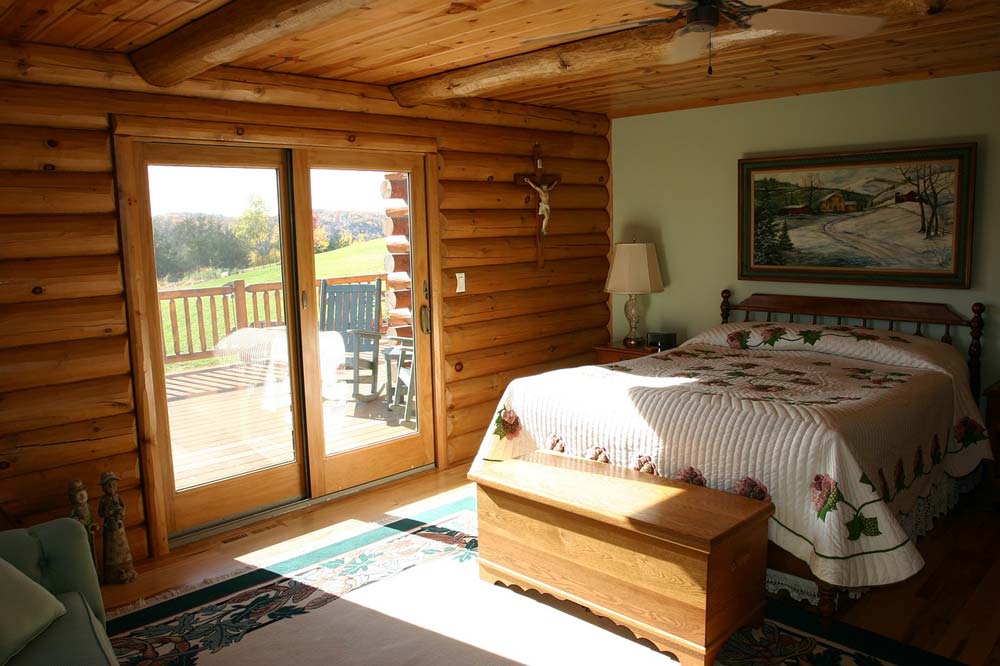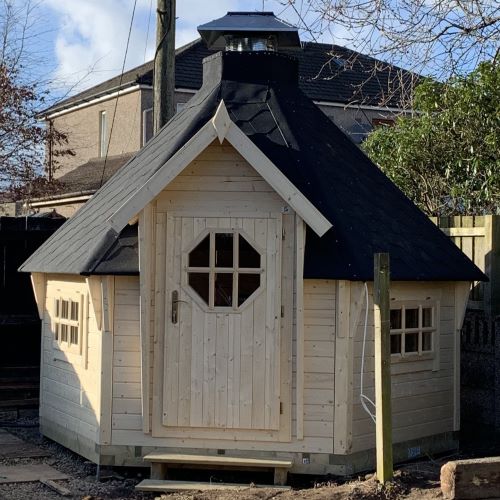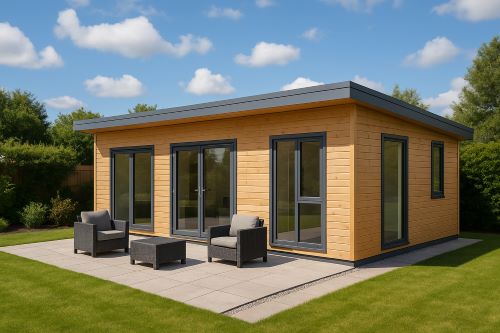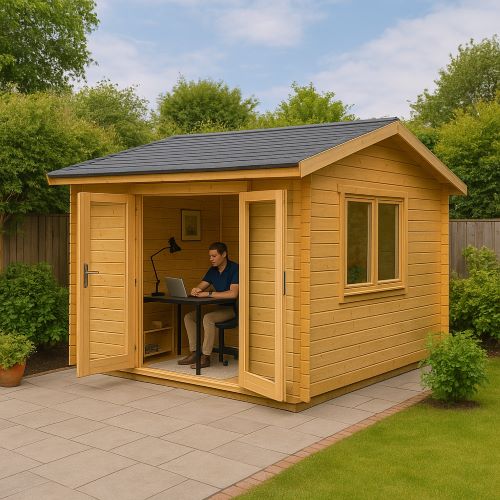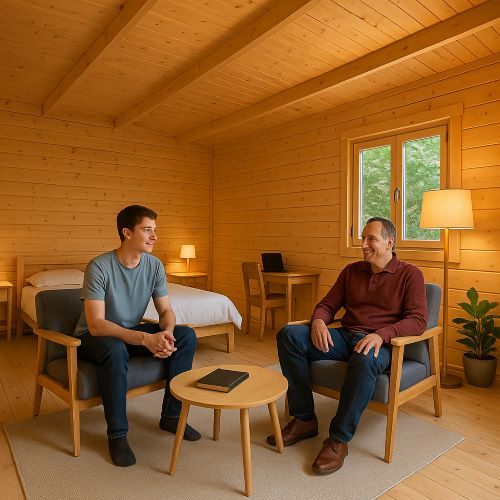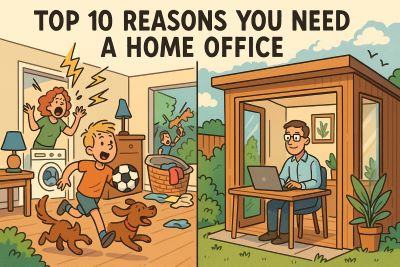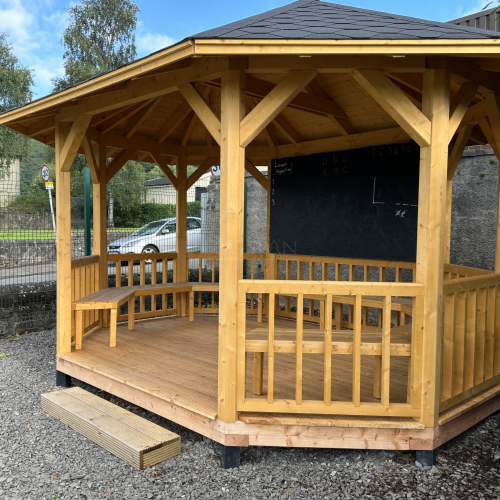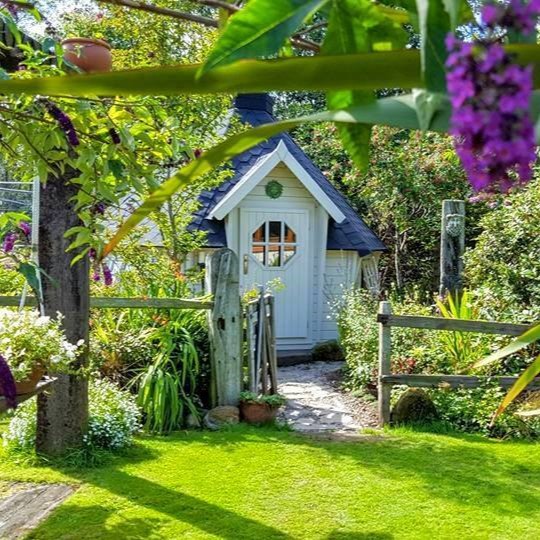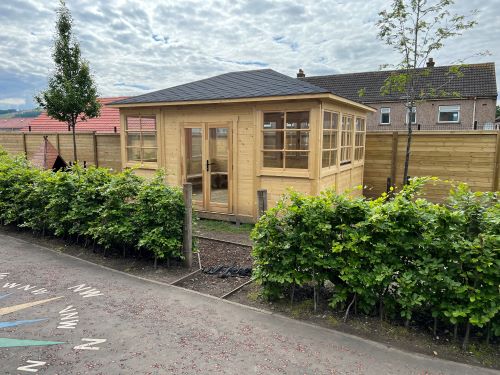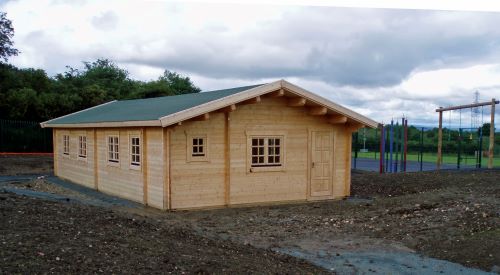If you need help getting Wi-Fi in your garden office cabin, there are several options available, However, deciding which one is best for your needs isn’t always easy. Whether you’re launching a business of your own or sometimes work remotely from home, having a dedicated office space on your property is an asset. However, not every home house has free space indoors to set up a work room. Fortunately, there’s a more affordable option than moving house or building an extension when you need to create more space for your home office.
Bespoke log cabins can be easily assembled in your garden and provide an insulated and weather-proof room where you can work peacefully and privately away from your main house. However, every garden office cabin requires access to Wi-Fi. For start-ups to stay competitive and achieve success, excellent broadband is essential for communication with customers, access to online apps and website uptime.
However, home and hybrid staff also need a strong and speedy connection to keep their remote working privileges. Broadband access ensures they are always available and functioning at the same level as they would on premises. As a result, dependable Wi-Fi in your garden office cabin takes careful consideration.
Wi-Fi is considered the most effective way to get connected to the internet in the home. So, you’d be wise to wonder if you can extend your home Wi-Fi to your garden office. In some cases, the Wi-Fi signal from your home router won’t be strong enough to serve your office, resulting in slow internet. Fortunately, there are options you can try which can ensure you receive a quality signal in your new outdoor office. In this blog, we’ll take an in-depth look at each solution so you can see which is ideal for your circumstance. Read on to learn more and make an informed decision.
Wi-Fi extenders
As its name suggests, a Wi-Fi extender is designed to connect to your existing home Wi-Fi network and then extend the signal. It effectively creates a bridge from your main router out to your garden office.
You need to plug the extender into the mains power of your house, selecting a location that is as close as possible to your garden office. This effectively creates an additional Wi-Fi network, and you can connect to it from your new work room.
What is the reach of a Wi-Fi extender?
Typically, Wi-Fi extenders are most effective for a shorter range of about 30 metres. As a result, if your garden office cabin is further away from your main router, you might need several repeaters to help bounce the Wi-Fi signal from one repeater to another. The Wi-Fi signal will always deteriorate the further it has to stretch. For garden offices at considerable distance from your main house, an alternative method of connectivity is advisable.
Features of a Wi-Fi extender
When you order an extender, it will state the maximum coverage it offers. Some models include smart technology that helps you find the best location to place them for optimal signal strength. Extenders have multiple adjustable antennas to improve coverage, and an AP Mode which creates a brand-new Wi-Fi access point that enhances wired networks with Wi-Fi capability.
What are the pros and cons of using Wi-Fi extenders with garden office cabins?
The main advantage of extenders is that they are the most affordable way to boost your broadband signal. They are also easy to install as they don’t require any wiring. They can help eliminate signal dead zones and are compatible with standard routers.
The key disadvantage of extenders is their limitations. They often struggle to work with brick wall buildings and users often experience inconsistent internet speeds. They can effectively cut available bandwidth by 50% and are generally only suited when garden offices are in proximity to your home and its router.
Powerline Networking
Powerline networks use the existing electrical cable connecting your home and garden office cabin and pass data between two powerline adaptors. The powerline network works with a Wi-Fi network, is easy to set up and is an “almost wireless” solution.
Features of a powerline network
A powerline network kit usually includes two or more adaptors. Each of these will have a short designated ethernet cable. The first adaptor plugs into your mains power and is connected to the home router via an ethernet cable and the second plugs into your garden office. This is connected to a PC using an ethernet cable or a second Wi-Fi router. This technology provides gigabit speeds and multiple data streams for enhanced coverage.
What are the pros and cons of using a powerline network with your garden office cabin?
The main advantage of this innovative way to extend Wi-Fi signals is that it uses the existing electrical wiring to work reducing costs. You can also install the powerline network when you’re constructing your office cabin.
The main downside of powerline networks is that you’ll need a professional electrician to install it. Additionally, to use electricity within your garden office cabin, it must be always wired to the distribution box used inside your home.
Ethernet Cable
Regarded as the most secure and dependable method of accessing an internet connection in an outbuilding, an ethernet cable runs between your office and home and can provide the fastest speeds.
How can you install an ethernet cable for a garden office cabin?
If plans for your new garden office already include using electricity inside, you can lay the Ethernet cable while your power cables are put in place. However, the Ethernet cable can be installed later if necessary, but this is a less streamlined option involving extra effort and disruption.
After the ethernet cable installation is complete, plug it into the back of your home router inside and then simply connect the opposite end to the router inside your garden office.
Features of an ethernet cable
Ethernet cables are designed for many different applications, but connecting a garden office requires a more durable product specifically designed for outdoor use. Cables are usually around 50 metres in length.
What are the pros and cons of using an ethernet cable to connect your garden office cabin?
As mentioned, the main gain of using an ethernet cable is that it is the most stable solution, providing a consistent signal and faster internet speeds.
The negatives mainly come in the form of installation. Running a cable to your garden office from within your home can be a tricky task involving wiring and, as a result, you may need a professional tradesman for installation.
Wi-Fi Point-to-Point (PtP)
Wi-Fi PtP works like a Wi-Fi extender, but is considered a more dependable solution. Typically, you'll fit one unit on the outside of your home while the other is installed on top of your garden office cabin. The two units require a power source to work, and configuration is necessary for the two units to communicate. As a result, effective installation can require a certain amount of technical knowledge.
The unit that is fitted to your main house will connect to your home network. It then transmits the router’s signal to the second unit mounted atop the garden building. This internet solution works at its best when a clear line of sight is present between the Point-to-Point devices.
Features of Wi-Fi Point-to-Point
Wi-Fi PtP effectively creates a wireless bridge from your home network to your garden office and feature built-in antennae to provide a maximum signal strength of 27dBm. Units are designed to deliver high performance with low power consumption.
What are the pros and cons of using Wi-Fi Point-to-Point to connect your garden office cabin?
The main advantage of deploying Wi-Fi PtP units is that their range is superior to a conventional Wi-Fi repeater. As they work effectively over longer distances, they can be a better fit when home offices are based in larger gardens. If ethernet cables are not an option for you and your garden office is located some distance from the main house, PtP is a valid option with a larger range and greater reliability than an extender.
The downside of using PtP units is that installations require some wiring and technical knowledge to configure them correctly and receive optimum results. They are also a more expensive product than buying a Wi-Fi extender.
Which type of garden office cabin Wi-Fi equipment should you choose?
The best solution for your home office will be impacted by several factors. The nearness of your office to your home will affect the options available, but so will your project budget, technical knowledge and DIY skills. It is always a smart move to consult a Wi-Fi professional before undertaking an installation. Remember when purchasing equipment for internet connectivity to select a dependable brand with a respectable reputation and excellent customer reviews.
Your go-to-solution for a garden office cabin
If the idea of bespoke log cabins sounds like the perfect base for business on your premises, we can help. Affordable, effective and often free of planning permission, a garden office cabin is easily accessible through us and can be constructed and customised to suit your work needs. Our bespoke service means you can order an insulated cabin you can work in all year round, and our garden buildings can come pre-wired for lights and sockets. Solar panels are also available when you’re looking for an off-grid power source.
If you’re looking for a home office in your garden, you can count on us. With over 20 years in our field, we’re a family-run business with the largest show site for timber buildings in the United Kingdom. Reach out to Logspan today and find your ideal garden office.

